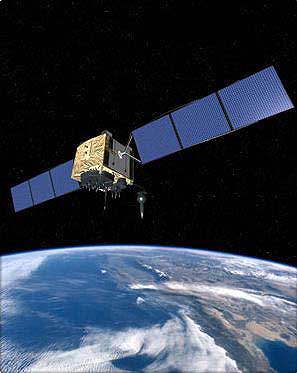In addition, officials from the Air Space command’s Space and Missile Systems Center’s Global Positioning Systems Wing announced the first GPS IIF satellite (SVN-62) arrived on-station 1 August. This indicates the satellite is in its designated orbital position and ready for its final phase of on-orbit checkout and testing, to be completed before September. Then the satellite will be cleared to serve navigation and timing users as part of the operational GPS constellation.

Air Force Space Command and Space and Missile Systems Center are charged with developing, acquiring, fielding and sustaining the world’s best space and missile capabilities for our warfighting forces and for the nation. The Air Force is committed to providing uninterrupted GPS service, at or above our performance commitments for decades to come.
Created by the U.S. Department of Defense to enhance US military warfighting capability, GPS is available for use, free of charge, to anyone with a GPS receiver. Since its development, the system has seen a proliferation of use by the civilian community and new applications are continuously being developed.
This increased civil and commercial use of GPS, coupled with lessons learned from years of military operations and specific experiences during Operation Desert Storm, Kosovo, Desert Shield and Iraqi Freedom, drove a desire to modernize the system - augment its capabilities while sustaining the current GPS mission. In response to new civil demands and the emerging doctrines of navigation warfare, the U.S. Air Force was charged with directing and procuring improvements to the GPS constellation. Boeing was selected to support the Air Force in architecting the future of GPS, guiding the introduction of new capabilities and technologies into the Block IIF to create a modernized satellite.
The GPS IIF system brings next-generation performance to the constellation. The GPS IIF vehicle is critical to U.S. national security and sustaining GPS constellation availability for global civil, commercial and defense applications. Besides sustaining the GPS constellation, IIF features more capability and improved mission performance. Each satellite delivers:
- Two times greater predicted signal accuracy than heritage satellites
- New L5 signals for more robust civil, commercial aviation
- Military signal "M-code" and variable power for better resistance to jamming in hostile environments, meeting the needs of emerging doctrines of navigation warfare
- A 12-year design life providing long-term service and reduced operating costs
- An on-orbit, reprogrammable processor, receiving software uploads for improved system operation
GPS IIF is the product of Boeing's heritage with 39 successful satellites from the GPS Block I and Block II/IIA missions and over 30 years of teamwork with the Air Force, sharing an architecture that ensures sustainment while augmenting mission performance.

